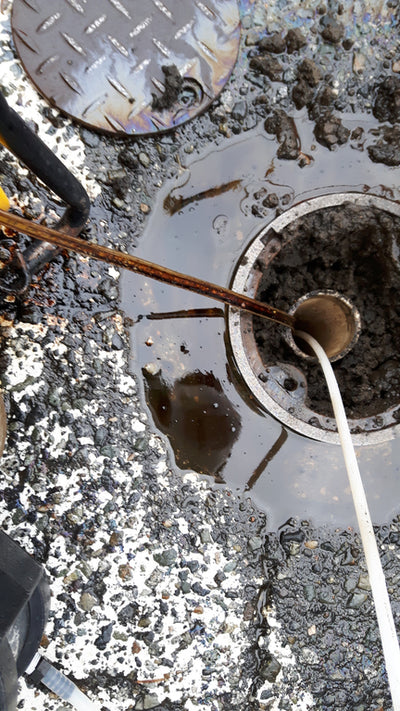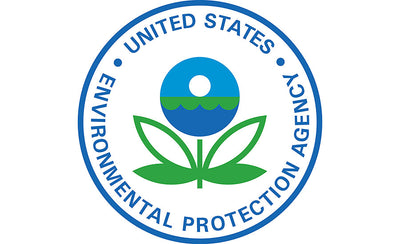Water Quality InformationWritten By Actual Experts
RSSEffects of Arsenic Exposure on Fetal Health

Uranium in Drinking Water: What You Need to Know

How Well Do Hydroviv Water Filters Remove Arsenic and Uranium?
Analies Dyjak, M.A. | Policy Nerd
Maine Well Water Case Study:
A prospective customer reached out to us about a year ago with concerns about his well water. After sending the well water test results from an EPA accredited lab to our science team, we were able to determine that his well water water was well above EPA regulatory standards for both arsenic and uranium. This meant that the levels in his well water were above what EPA considers to be safe for human consumption. Private well owners are on their own for determining the safety of their well water.
How Well Did Hydroviv Remove Arsenic and Uranium?
Hydroviv’s Undersink Water Filter brought his arsenic levels down from 23.9 parts per billion to undetectable. For a bit of perspective, his pre-filtered levels were over twice as high as the EPA federal standard for arsenic. Hydroviv filters also brought his uranium levels down from 235 parts per billion to undetectable. His pre-filtered levels were over 7 times higher than the EPA federal standard for uranium. The graph below shows the uranium and arsenic levels, before and after installing a Hydroviv Undersink Water Filter.

Arsenic in Drinking Water:
Arsenic is a naturally occurring heavy metal found in bedrock throughout the United States. Arsenic leaches from bedrock into well water overtime through a process known as natural weathering. The presence of arsenic is entirely dependent on your area’s geology. This means that arsenic may be present in seemingly pristine well water located far away from factories and other sources of pollution. Arsenic can cause various types of cancers, including bladder, lung, liver, and prostate. Some states with the highest rates of bladder cancer also have the highest levels of arsenic in groundwater.
Uranium in Drinking Water:
Uranium is a naturally occurring radionuclide typically found in groundwater. Similar to arsenic, the presence of uranium in well water is dependent on your area’s geology. Long term exposure to uranium in drinking water increases the risk of kidney cancer in humans. The current EPA federal standard for uranium in drinking water is 30 parts per billion. Most standard pitcher and refrigerator pitchers do not include the necessary filtration media to remove uranium from drinking water.
How Do I Know if Arsenic and Uranium are in My Well Water?
Our team of Water Nerds analyzes every order based on the zip code provided at check out. If you live on a private well, we use publicly available USGS data, State Source Water Assessment Program (SWAP) data, municipal Consumer Confidence Reports (CCR), and other internal well water test results. Using these data, we are able to determine the contaminants that are likely present in your well water.
Other Articles Recommended For You:5 Things That Most People Don't Realize About Well Water
Home Water Testing: What You Should Know
How is EPA Responding to COVID-19?
Military Bases Have High Concentrations of PFAS Chemicals

***Updated 8/29/18 to include video***
Analies Dyjak | Policy Nerd
Per and Polyfluoroalkyl Substances (PFAS) have been receiving a ton of media attention throughout this past year. PFAS are a category of toxic contaminants that have invaded public and private drinking water systems across the entire country. Military bases are extremely susceptible to this type of contamination because of necessary on-base activities. If you would like to learn more about what PFAS are, their health effects, and if they're regulated, please click here.
Why Do Military Bases Have High Concentrations of Per and Polyfluoroalkyl Substances (PFAS)?
Military bases have historically had issues with pollution, due to the nature of on-base activities. Municipal fire departments also travel to nearby military bases because they provide an open, secure area to train. So not only are military personnel being directly exposed to PFAS chemicals in water, but so are local fire departments. The Department of Defence isn’t necessarily to blame for the high rates of contamination of PFAS on military bases. The Manufacturers of PFAS-containing fire fighting foam who actively sell to the DOD are greatly at fault. Because there is no effective alternative on the market, the military has no choice but to continue purchasing and using these products. Unlike many other countries, the United States doesn’t use the precautionary principle in chemical manufacturing. This means that chemicals are introduced to the market before toxicological due diligence is completed. Most of the time it takes someone getting extremely sick for manufacturers to even begin to pay attention.
More often than not, military bases have their own underground private wells that provide drinking water to families living on base, rather than being apart of a public drinking water system. Fire fighting foam can either directly percolate into soil, or run off into surrounding surface water sources. Water from contaminated soil naturally recharges on-base drinking water wells, which families consume on a daily basis.
What Is The Department of Defense Doing About Per and Polyfluoroalkyl Substances (PFAS) on Military Bases?
The most recent data provided by the DOD stated that 99% people receiving non-DOD-treated water were served by systems with no violations, whereas only 89% of people receiving DOD-treated water were served by systems with no violations. It’s important to note that these data are from bases that voluntarily tested for PFAS chemicals in water, but they do however reiterate that military bases have higher concentrations of this contaminant than other areas in the country. In October of 2017, the US Government Accountability Office reported that the Department of Defense has taken action on PFAS. DOD has directly shut down wells or provided filtration to 11 military installations. This is definitely a step in the right direction, but there are over 400 military bases in the United States that are still contaminated. Approximately 3 million people in the US drink water provided by the DOD. Not only are active military personnel at risk, husbands, wives and children are being adversely impacted by PFAS chemicals in water. Again, manufacturers of these dangerous chemicals are mostly to blame for such high concentrations of PFAS contamination on military bases.
What Are Public Officials Doing About Per and Polyfluoroalkyl Substances (PFAS)?
EPA set a Lifetime Health Advisory Level of 70 parts per trillion for both PFOA and PFOS. The rule of thumb for PFAS is that the sum of the category of contaminants should be no higher than 70 parts per trillion. ATSDR believes this level should be reduced to 20 parts per trillion for drinking water. Again, Lifetime Health Advisory Levels and Minimum Risk Levels are non-enforceable limits that municipalities are not required to follow. DOD has not developed their own standard for PFAS in drinking water and therefore follow the non-enforceable national level of 70 parts per trillion. DOD is not at all incentivized to create a standard or even test for PFAS, because of the outrageous mitigation expenses.
Other Articles We Think You Might Enjoy:PFAS: What You Need To Know
Recap of EPA's 2018 PFAS National Leadership Summit
PFAS: Toxicological Profile
EPA Proposes New Definition of "Waters of the United States"
Analies Dyjak & Matthew Krug
February 14th 2019: The Department of the Army and the Environmental Protection Agency posted the newly proposed “Waters of the United States” rule to the Federal Register. At its core, the proposed EPA WOTUS rule limits the water that EPA can regulate and monitor. By narrowing the scope of WOTUS definitions, this basically gives industries a roadmap of where it’s okay to pollute without the need for permitting. This is a big deal for the 45 million Americans who rely on well water for drinking and bathing. So, why should you care about the definition of waters of the United States?
"Waters of the United States"
This definition, also known as “WOTUS” has been up for debate for decades, and it’s interpretation has seen several Supreme Court cases. This proposed rule determines what waters the federal government is able to regulate and monitor. Generally, “waters” have traditionally been navigable waters such as oceans, rivers, ponds, and streams. As our scientific understanding of hydrology has improved, the scope of what are considered “waters” has expanded.
What Is Not Protected Under The Proposed Rule?
WOTUS definitions name certain waters as “excluded,” which, in this case, means they do not have a surface water connection. This means that groundwater, ephemeral streams, ditches, prior converted cropland and some wetlands and ponds are not included. This is a continued rollback of environmental regulations - and the 2019 EPA WOTUS rule proposal may have the farthest-reaching implications of all.
How Does This Proposed Rule Affect Drinking Water?
This rule puts the 45 million Americans that use private wells as a primary source of drinking water at risk. Private wells are not regulated by federal, state, or local governments, and agencies are not required to test for contaminants or ensure “compliance.” A 2006 study by the USGS concluded that private wells are already contaminated with various types of agricultural runoff, solvents, fumigants and inorganic compounds, the most common being arsenic and nitrates. Arsenic is a naturally occurring organic compound, that enters groundwater as bedrock weathers overtime. However, nitrates are used in fertilizers and enter both surface and groundwater from agricultural runoff. 8.4% of the wells tested in this study were in exceeded the federal standard for nitrates (we have an article dedicated specifically to nitrates in groundwater). Further, EPA does not provide recommended criteria or standards for private well users. By rolling back protections, private well users are being further kept in the dark.
How Did They Arrive At this Rule?
The proposed EPA WOTUS rule is primarily based off a majority opinion by Justice Scalia in the Supreme Court case Rapanos v. United States. Scalia’s interpretation favored “traditional waters,” and steered away from Justice Kennedy’s “significant nexus theory.” In his majority opinion, Scalia wrote that federal protections should cover:
“...only those wetland with a continuous surface connection to bodies that are waters of the United States.”
Who’s Driving?
The American Farm Bureau dominated the conversation at the press conference for the proposed EPA WOTUS rule in early December of 2018. Industries lobbied hard to limit the scope of jurisdictional waters. In a political landscape where there is an abundance of legislation grandfathered in to protect the chemical, fossil fuel, and agricultural industries, it should come as no surprise that the current administration did not break from tradition. The agricultural industry is not the only institution who will benefit from this proposed rule. Chemical manufacturing companies have to go through a rigorous permitting process determined by state or federal governments (NPDES) which regulate pollution. But now, with a clearly defined and reduced scope of what constitutes a water of the United States, these companies are able to map out how to circumvent regulation.
The federal government has designated this as “economically significant”
This means that the proposed rule with have an annual effect on the economy of $100 million or more.
Our Take:
This proposed WOTUS definitions puts the 15% of the country at further risk of groundwater contamination. This population of people are now on their own in terms of monitoring their drinking water and keeping up with land use changes. Our science team will be submitting public comments on this proposed rule, which will be available on our website in the upcoming weeks. We encourage our readers to do the same thing! CLICK HERE for the link to the WOTUS public comment page.
Other Articles We Think You Might Enjoy:5 Reasons Why Bottled Water Isn't The Solution To Drinking Water Contamination
Nitrates In Drinking Water
Why Runoff From Farms Is A Big Deal




